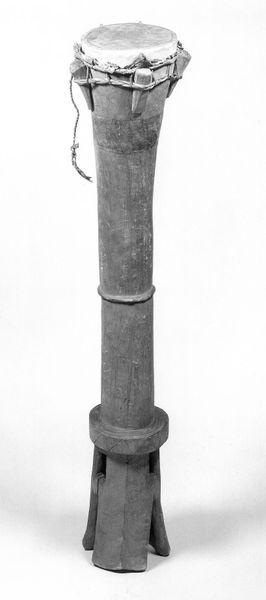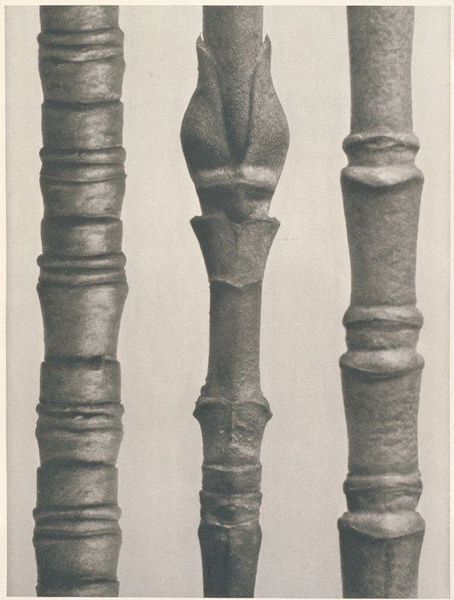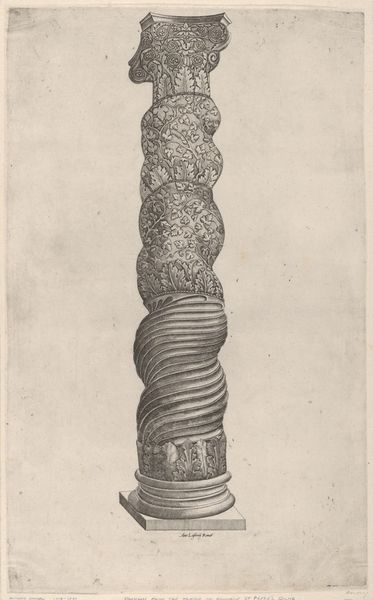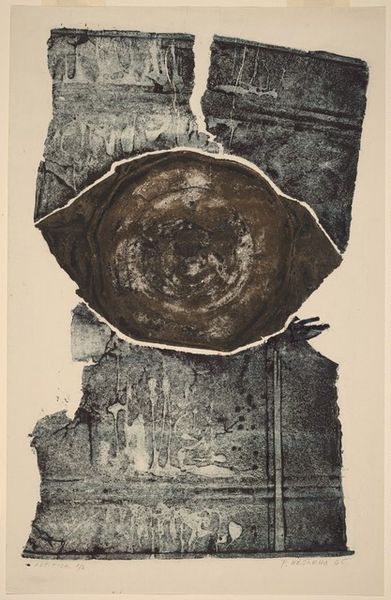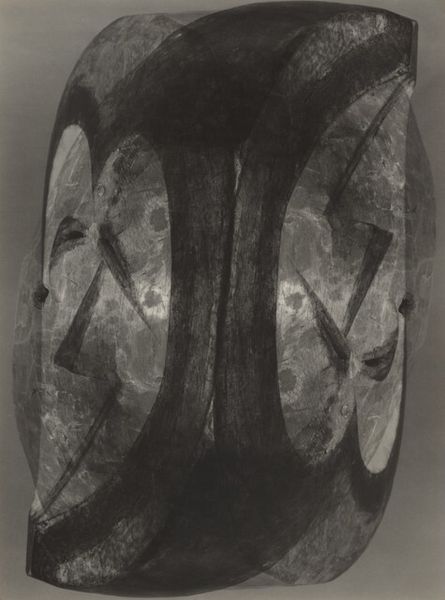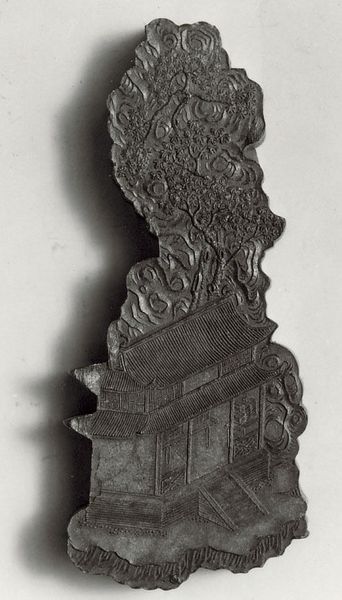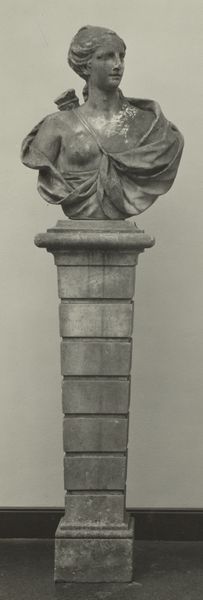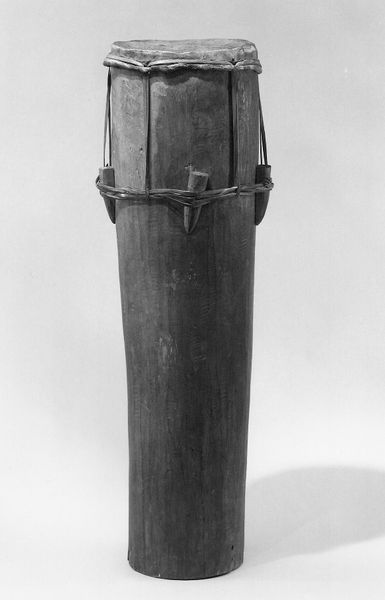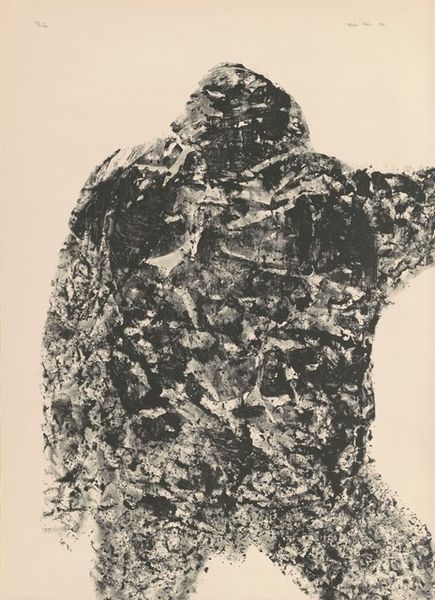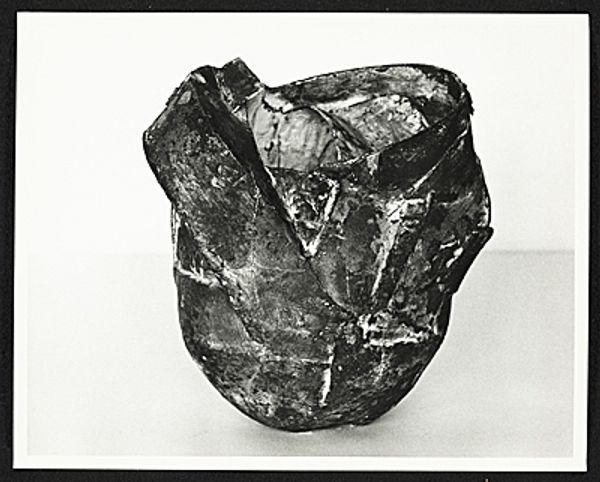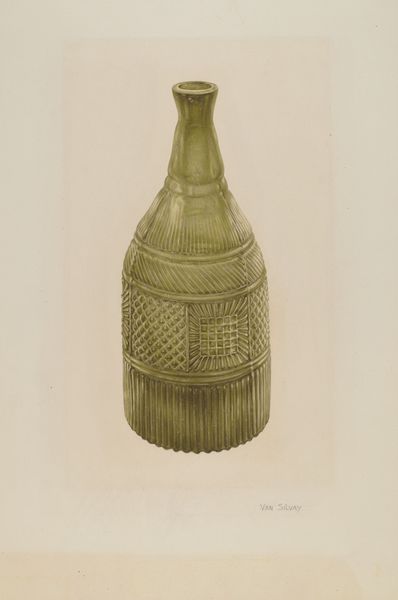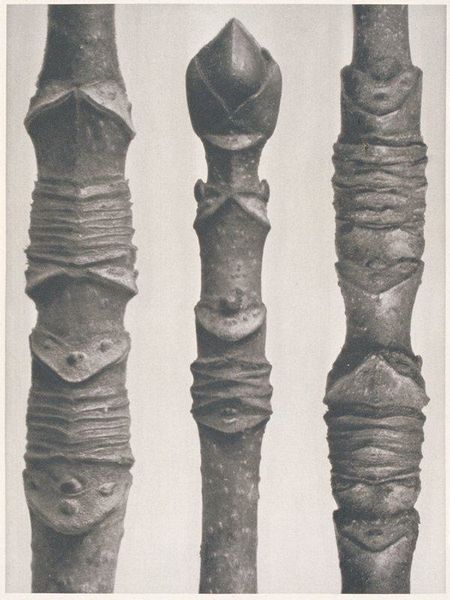
photogravure, photography, gelatin-silver-print
#
photogravure
#
charcoal drawing
#
photography
#
pencil drawing
#
gelatin-silver-print
#
charcoal
#
graphite
Dimensions: 10 1/4 x 5 7/8 in. (26.04 x 14.92 cm) (image)12 5/16 x 9 9/16 in. (31.27 x 24.29 cm) (sheet)
Copyright: No Copyright - United States
Curator: It’s hard to believe that such an austere, almost architectural form belongs to a humble plant. Karl Blossfeldt, sometime before 1928, captured this extraordinary image of Equisetum Hyemale, or Rough Horsetail. Editor: My immediate reaction is that it resembles some kind of ancient ziggurat, like a monument rising from the earth. The neutral tones and stark lighting definitely lend it a weighty, timeless feel. Curator: Blossfeldt aimed to reveal the underlying structures and patterns within nature. Using photogravure, he highlighted the geometry he perceived, democratizing beauty by pointing to forms we often overlook. There’s a certain social commentary there. Editor: Definitely. There is also a dialogue regarding accessibility and the art world. Before this work, people perhaps would not look twice at Horsetail, but by isolating the subject, he transformed its reception by providing the viewer a second, prolonged interaction to explore beauty. Was there a shift with how plants and botany were seen after this collection? Curator: The work invites consideration of botanical life that many individuals, especially women, were starting to document, with the increase and improvements to personal cameras and film. Blossfeldt also utilized his images as teaching tools. Understanding both art and natural processes can transform how you see the world. Editor: I can imagine these photographs sparking a real appreciation for botany within art classes, but the way in which art historical structures are designed, I wonder how deeply they truly affected or challenged people. Is his practice one that we celebrate simply because he challenges prior traditions, and were his own views exclusionary towards women photographers? Curator: Your skepticism is understandable. There are problematic layers of exclusion within the development of any historical practice. We often have to consider intention, outcome, and sociopolitical movements of its day when examining these. Perhaps this botanical artwork offers us more to explore together in the future. Editor: I look forward to it.
Comments
minneapolisinstituteofart almost 2 years ago
⋮
Blossfeldt’s works were primarily used as teaching tools and were brought to public attention in with his first publication Urformen der Kunst (Art Forms in Nature). Published in 1928 when Blossfeldt was a professor of applied art, Urformen der Kunst quickly became an international bestseller and in turn, made Blossfeldt famous almost overnight. His contemporaries were impressed by the abstract shapes and structures that he revealed in nature. Soon regarded as a seminal book on photography, Blossfeldt’s objective and highly detailed imagery was praised by German philosopher and cultural critic Walter Benjamin, who declared that Blossfeldt ‘has played his part in that great examination of the inventory of perception, which will have an unforeseeable effect on our conception of the world’. Benjamin compared him to the pioneers of New Objectivity, such as Moholy-Nagy, also seen in this exhibition, and ranked his achievements alongside great photographers such as August Sander.
Join the conversation
Join millions of artists and users on Artera today and experience the ultimate creative platform.

